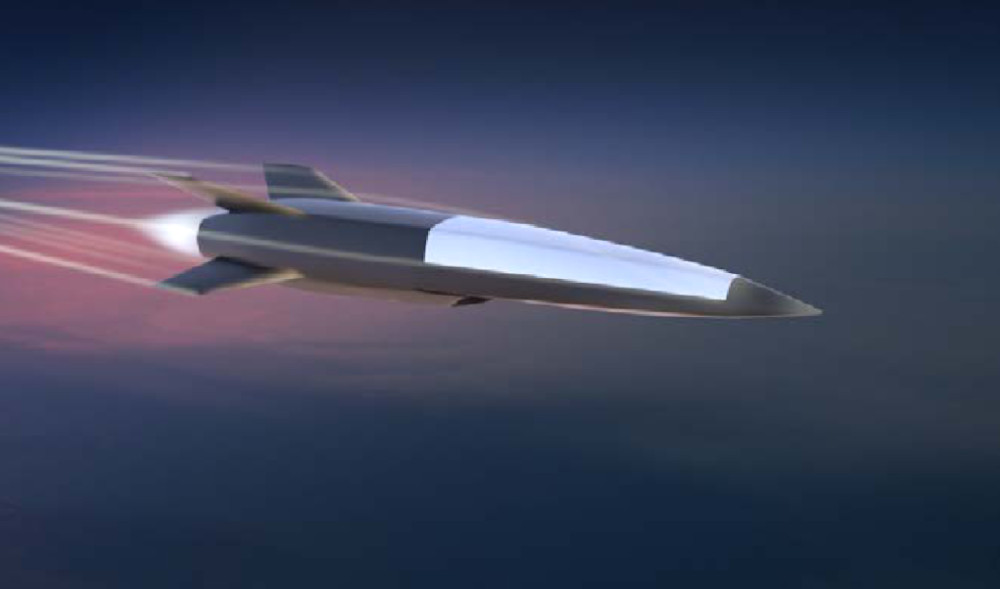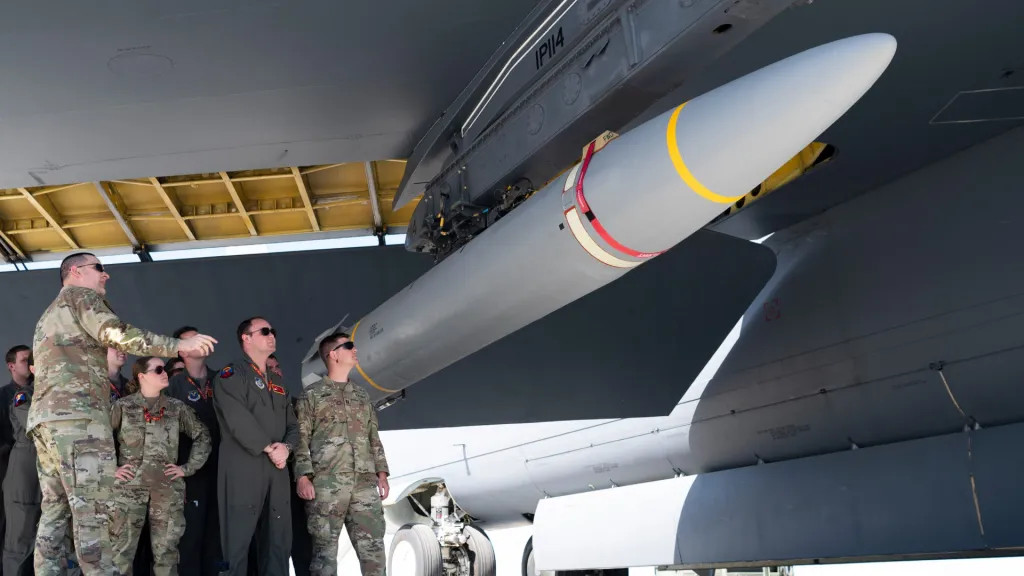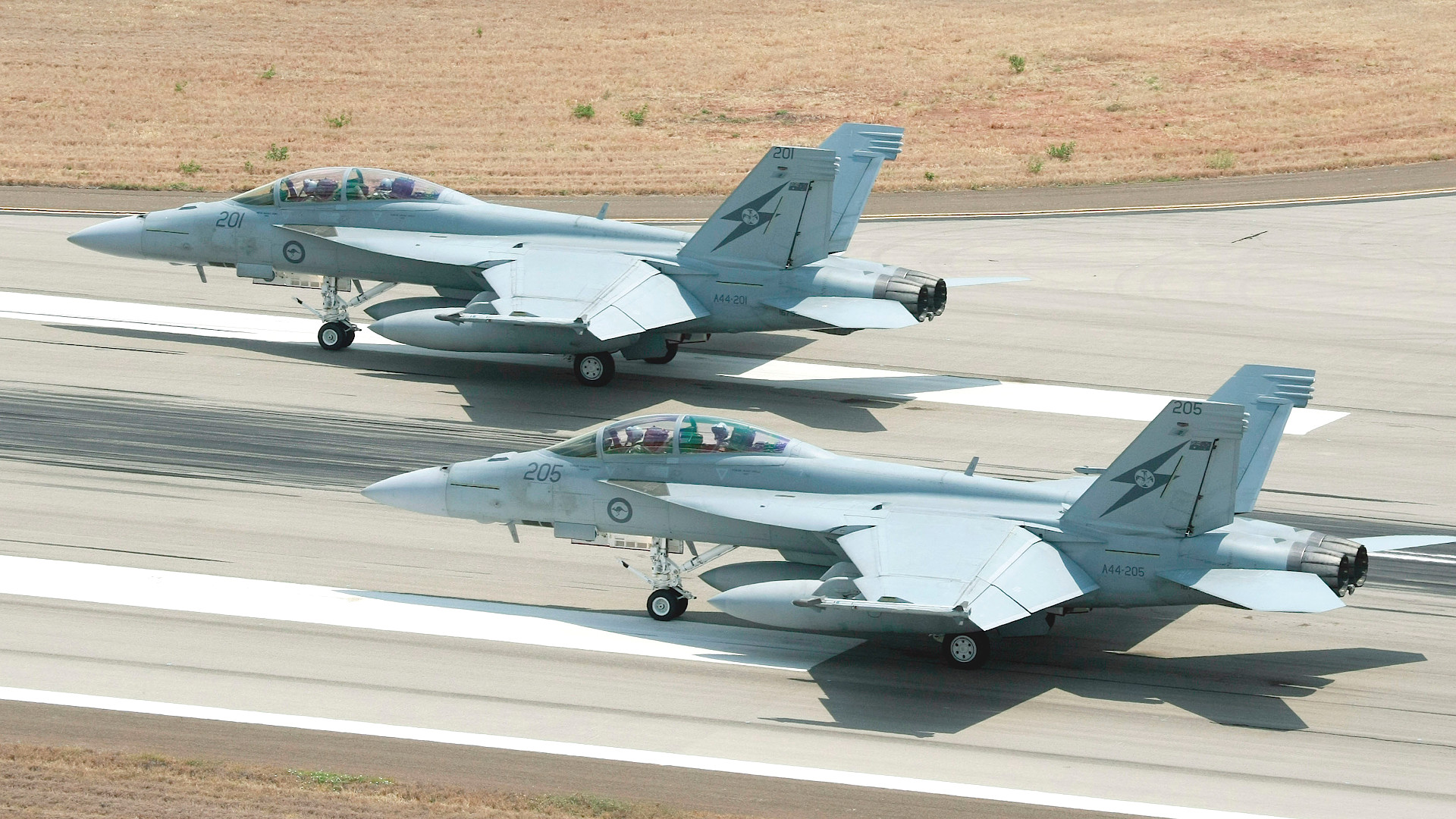Royal Australian Air Force (RAAF) F/A-18F Super Hornets will test launch prototypes of the U.S. Air Force’s air-launched Hypersonic Attack Cruise Missile (HACM) over ranges in that country as part of the development of that weapon. HACM, which the Air Force hopes to begin fielding in at least limited numbers in 2027, is intertwined with U.S.-Australian efforts that are set to help the latter country acquire its own air-launched hypersonic cruise missile capability.
New details about the test plan and other aspects of the HACM program were included in an annual report on major U.S. military programs that the Government Accountability Office (GAO) released yesterday. Raytheon, in cooperation with Northrop Grumman, has been on contract with the Air Force to develop HACM since 2022.
Specific details about the HACM design are limited. “The missile consists of two stages, a rocket booster and a scramjet cruiser, which separates from the booster and eventually dives toward its target,” according to the GAO report. The missile’s expected peak speed is unknown, but hypersonic speed is typically defined as anything above Mach 5.

The Air Force has said in the past that it is planning on integrating HACM first onto the F-15E Strike Eagle, but the expectation has long been that the missile will eventually make it into the arsenals of other aircraft. At least some level of integration work will be required to utilize Australian F/A-18Fs as test launch platforms.
Ostensibly, the main reason for using RAAF Super Hornets to help test HACM has to do with “test range availability and limitations,” which “have been an issue for hypersonic programs,” in general, according to GAO. The Congressional watchdog says that HACM flight testing could begin as soon as this coming October and that it is set to run through March of 2027.
The U.S. military certainly does face limitations when it comes to testing infrastructure and supporting assets to help with hypersonic development programs. Significant investments have been made in recent years to rectify this, including the acquisition of a fleet of modified RQ-4 Global Hawk drones called Range Hawks for use in gathering data during hypersonic flight tests. Australia operates MQ-4C Tritons, derived from the Global Hawk, and has facilities to support those drones, raising the possibility that the Range Hawks could help with future hypersonic testing in that country.
The Air Force has previously announced plans to conduct HACM test launches in Australia, as well, with the expectation that this will take place at the country’s sprawling Woomera Test Range. Woomera is a specialized and highly secure range complex that has been used to support U.S.-Australian hypersonic testing for years now, as well as many other programs. Its remote inland location is well suited for sensitive testing, such as of advanced hypersonic weapons like HACM, especially compared to over-water ranges where adversary ships and aircraft have better vantage points to gather intelligence.
The video below shows a hypersonic test conducted at Woomera in 2016 under the U.S.-Australian Hypersonic International Flight Research Experimentation (HiFIRE) program.

At the same time, HACM is being conducted in parallel with the U.S.-Australian Southern Cross Integrated Flight Research Experiment (SCIFiRE) program. The Air Force has said in the past that HACM will leverage work done under SCIFiRE, but the latter also looks set to benefit from the development of the former. The Air Force has said explicitly in the past that Raytheon will “operationalize” a design it previously developed under SCIFiRE for HACM. The Air Force’s current hypersonic cruise missile effort also builds on work the Defense Advanced Research Projects Agency (DARPA) had done under its Hypersonic Airbreathing Weapon Concept (HAWC) program.
When the U.S. Air Force and RAAF might begin fielding HACMs and/or related missiles developed under SCIFiRE remains to be seen. As already noted, the Air Force’s goal has been to achieve at least a limited operational capability with HACM in 2027. However, GAO’s new report suggests that there could be delays in that plan, especially given that developmental flight testing is only supposed to wrap up in March of that year.
“The Air Force plans to produce 13 [HACM] missiles during the rapid prototyping effort, including test assets, spares, and rounds for a residual operational capability,” according to GAO. However, “the Air Force plans to transition HACM to the major capability acquisition pathway at either development start or production start in 2027, depending on what capabilities the Air Force is willing to accept and whether production facilities are ready.”

This is in line with statements from senior Air Force officials in the past year or so that have pointed to potential issues with HACM.
“It is early days in the program, and so you certainly hope that a program like HACM is on track at this stage, because it’s quite early. And they typically are, right? And so, I’d say it’s on track but it is a challenging program,” Andrew Hunter, Assistant Secretary of the Air Force for Acquisition, Technology, and Logistics, told DefenseScoop in an interview published in December 2023. “That’s why we’re undertaking a rapid prototyping effort really is to work through some of the potential risks, some of the potential technical risks associated with the HACM concept.”
In March 2023, the Air Force had said it was focusing its attention hypersonic weapons-wise on HACM, which would be supported in part by a shift in resources from the expected cancellation of the AGM-183A Air-Launched Rapid Response Weapon (ARRW). ARRW, which had a mixed track record in its flight testing, is a completely different type of hypersonic weapon utilizing an unpowered boost-glide vehicle, as you can read more about here.

Since then, however, signs have emerged that point to continued work on ARRW, or a follow-on program, possibly in the classified realm, amid the talk of challenges with HACM. The Air Force’s original goal had been to start fielding ARRW as its first operational air-launched hypersonic weapon in 2022.

How exactly progress with HACM, or lack thereof, may impact SCIFiRE’s schedule is unclear. As of 2020, the expectation was that SCIFiRE could lead to an operational Australian air-launched hypersonic cruise missile capability within a decade.
The U.S. Air Force and Australian authorities have made clear that they see hypersonic weapons as being essential tools for succeeding in future conflicts, especially potential high-end fights, such as one in the Pacific against China. Air-breathing hypersonic cruise missiles like HACM offer a way to strike targets, especially time-sensitive ones, very quickly, even across extended ranges. The extreme speed of these weapons coupled with the ability to follow an irregular route to the target (or even be completely retasked in flight) makes them difficult to intercept and reduces the overall time an opponent has to react.
It’s also worth noting that the U.S. Navy is working to acquire an air-launched hypersonic anti-ship cruise missile under the Hypersonic Air-Launched Offensive Anti-Surface Warfare (HALO) program, with the F/A-18E/F Super Hornet expected to be the initial launch platform. The service’s current goal is to begin fielding HALO in the 2029 Fiscal Year. Ship and submarine-launched versions of the final HALO design might follow in the future, as well.
“Current plans for HALO are focused on development and integration of an air-launched, carrier-suitable weapons system,” Navy Capt. Richard Gensley, the Precision Strike Weapons (PMA-201) program manager within Naval Air Systems Command (NAVAIR), told The War Zone earlier this month when asked about the potential for HALO to be launched from platforms besides aircraft.
Whatever the case, continued cooperation between the U.S. Air Force and the RAAF on HACM and SCIFiRE underscores the deep partnership between the militaries of the two countries. This relationship is still growing thanks most recently to the trilateral Australia-United States-United Kingdom (AUKUS) defense cooperation agreement that was first announced in 2021. Work to get Australia its first-ever fleet of nuclear-powered submarines, which is set to include U.S.-made Virginia class types and examples of all-new design, is AUKUS’ flagship initiative. The agreement is already facilitating cooperative work in other domains, including in uncrewed aircraft and artificial intelligence.
RAAF F/A-18F Super Hornets are now set to be an important element of ongoing U.S. and Australian efforts to develop and field air-launched hypersonic cruise missiles that could be key weapons in a future large-scale conflict in the Pacific.
Contact the author: joe@twz.com
